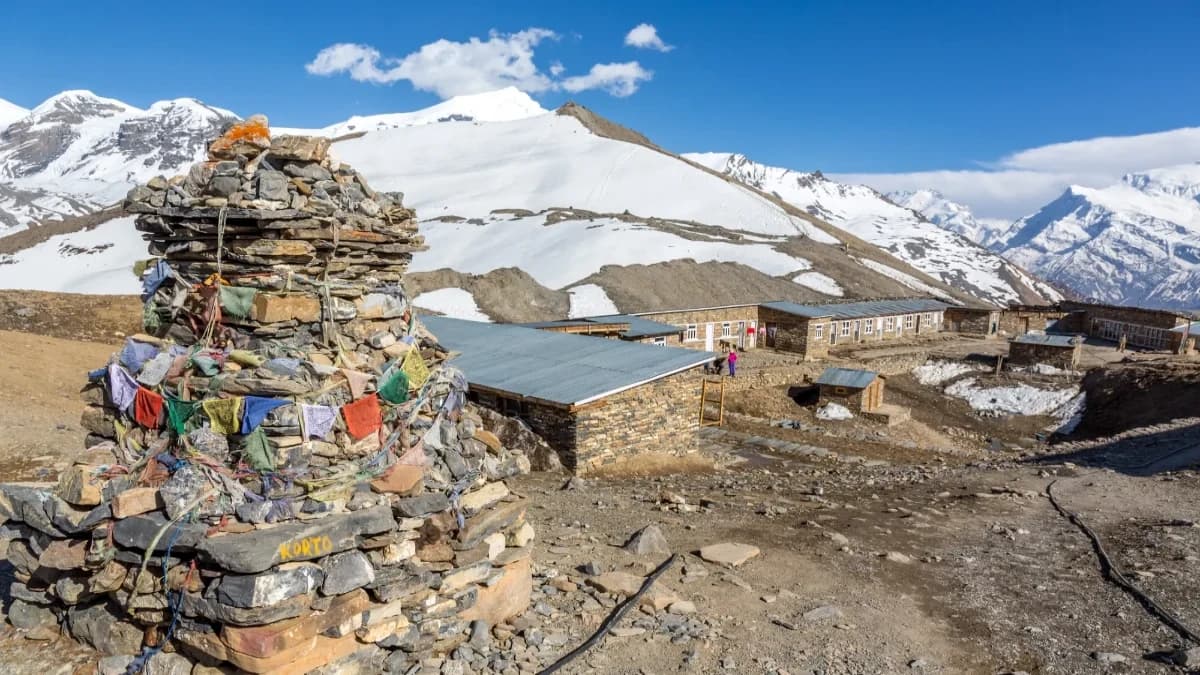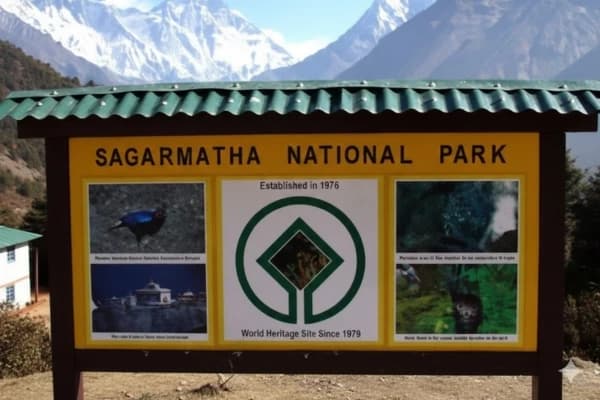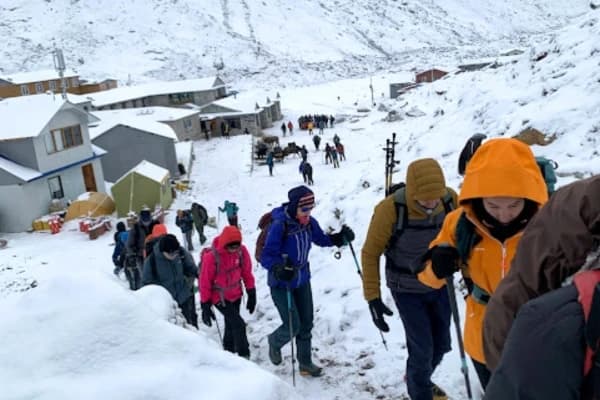Yes, the Annapurna Circuit Trek is generally safe for well-prepared trekkers. However, risks like altitude sickness, sudden weather changes, and trail hazards can occur. With the right preparation, guide support, and awareness, the journey can be both safe and unforgettable.
The key to safety lies in understanding the main risks: altitude sickness, unpredictable weather conditions, and challenging trail sections. When you prepare properly and follow proven safety guidelines, you can minimize these dangers and focus on enjoying one of the world's most spectacular trekking experiences.
According to the Nepal Tourism Board, over 20,000 trekkers safely complete the Annapurna Circuit each year, making it one of the most popular long-distance treks in the world.
Main Risks on the Annapurna Circuit
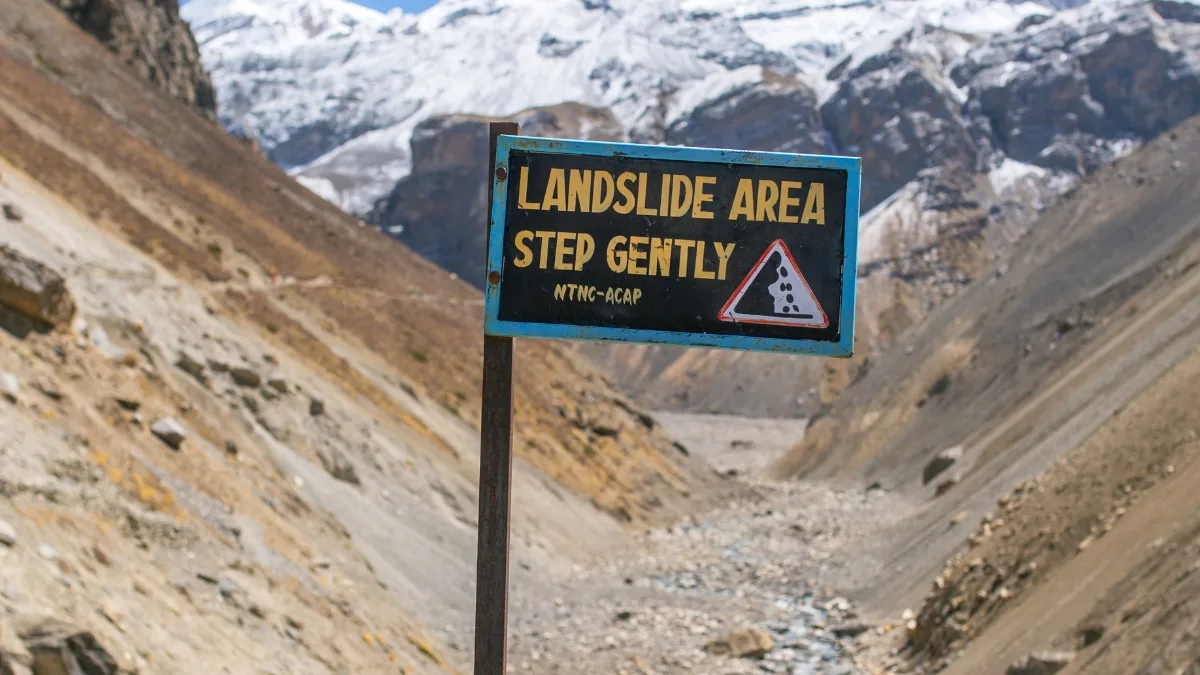
Trekking the Annapurna Circuit is not very dangerous, but it has some challenges. Knowing these risks helps you stay safe and enjoy the trek more.
The main dangers are altitude sickness, tough trail conditions, and fast-changing weather. Most problems happen when people don’t respect the mountain or forget important safety steps.
By understanding these risks and preparing well, you can reduce danger and have a great trekking experience.
Note: Hiring a licensed guide, porter or trekking agency like Nepal Gateway Trekking not only supports the local economy but also improves safety, as they can recognize early signs of AMS and help during emergencies.
Altitude Sickness (AMS) at Thorong La Pass
The Thorong La Pass reaches 5,416 meters (17,769 feet), making altitude sickness(AMS) a serious concern for many trekkers. This condition occurs when your body struggles to adapt to reduced oxygen levels at high elevation.
Common symptoms include:
- Persistent headaches that worsen with activity
- Nausea and loss of appetite
- Dizziness and fatigue
- Shortness of breath during normal activities
- Difficulty sleeping
Prevention strategies:
- Follow proper acclimatization schedules with rest days
- Ascend gradually (no more than 500m elevation gain per day above 3,000m)
- Stay well-hydrated (3-4 liters of water daily)
- Avoid alcohol and sleeping medications
- Listen to your body and descend if symptoms worsen
In 2019, a group of trekkers had to be rescued at Thorong La due to AMS, despite being fit and experienced. (The Himalayan Times, Kathmandu Post) This highlights how unpredictable altitude can be.
The golden rule, "Climb high, sleep low" helps your body adjust naturally to altitude changes.
Did you know? Oxygen levels at Thorong La are nearly 50% lower than sea level.
Our guides are trained in altitude response and carry oximeters to monitor trekkers daily. Explore our Annapurna Circuit Trek package.
Trail Difficulty
The Annapurna Circuit has different trail challenges that can be hard even for experienced hikers.You’ll trek through different sections like Yak Kharka to Thorong Phedi. Knowing these helps you get ready in your mind and body.
Main Trail Hazards
- Uneven stone steps and rocky paths can hurt your ankles.
- Some narrow ridges have steep drop-offs.
- River crossings on suspension bridges can be scary when it's windy.
- Loose rocks and scree near mountain passes are unstable.
- Muddy and slippery parts appear during the monsoon season.
Gear You Need
- Strong trekking boots that support your ankles well.
- Trekking poles to help you keep your balance.
- Microspikes or crampons if you walk on ice.
- A headlamp with extra batteries for starting early in the dark.
- Carrying less weight reduces strain and lowers accident risk.
Want to know how far you'll walk each day? Get your Annapurna Circuit trek distance guide and daily route info to hike smarter and safer.
Weather Conditions
Mountain weather can change very fast and become dangerous suddenly. The October 2014 snowstorm showed how seriously bad weather can be, 43 deaths, hundreds stranded on that day so it is important to always respect the power of nature.
Weather Risks
- Sudden snowstorms can trap you high up.
- Heavy monsoon rains can cause landslides and wash away trails.
- Strong winds happen on exposed ridges and mountain passes.
- Temperatures can drop fast, causing hypothermia.
- Poor visibility makes it hard to find your way.
Tips for Weather Safety
- Trek in the best seasons: March to May and September to November.
- Check the weather forecast every day and change your plans if needed.
- Bring clothes you can wear in layers for all types of weather.
- Start trekking early to avoid bad weather in the afternoon.
- Have backup plans in case the weather causes delays.
|
Season |
Pros |
Cons |
Safety Level |
|
Spring (Mar–May) |
Stable weather, flowers |
Some crowds |
High |
|
Monsoon (Jun–Aug) |
Fewer trekkers |
Landslides, leeches |
Low |
|
Autumn (Sep–Nov) |
Clear skies, festivals |
Busy teahouses |
High |
|
Winter (Dec–Feb) |
Snow landscapes |
Thorong La may close |
Medium |
Annapurna Circuit Trek Safety Precautions
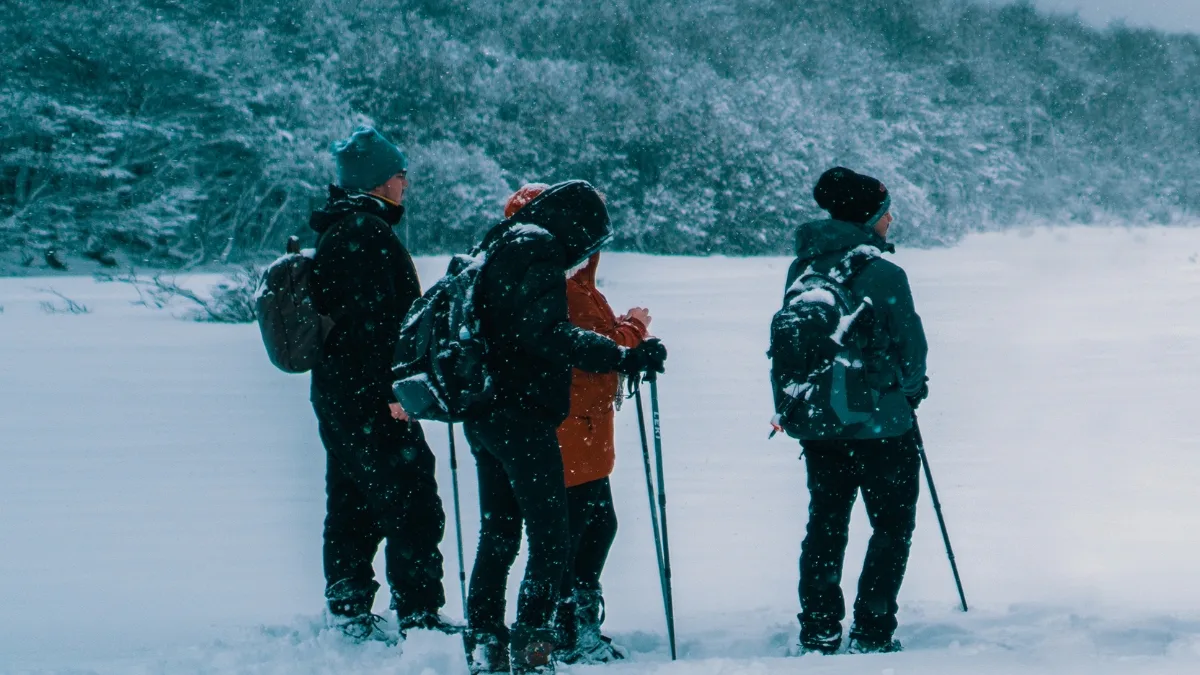
Smart preparation lowers your risks and makes your trek much better. These safety tips come from many years of guiding and thousands of happy trekkers.
Important Preparation Steps
- Plan rest days to get used to the altitude, especially in Manang.
- Hire experienced local guides and porters to help with directions and carrying bags.
- Get very fit with months of training before your trek.
- Bring the right gear, like layered clothes, good boots, and trekking poles.
- Travel with partners because trekking alone is riskier.
- Study maps and know your daily trail options.
- Get travel insurance that covers helicopter rescue.
- Set clear emergency contact plans with your family and trekking agency.
Physical Preparation
- Start cardio training 3 to 4 months before trekking.
- Practice hiking with a loaded backpack.
- Build leg strength and endurance.
- Try walking on rocky or uneven ground before the trek.
Mental Preparation
- Learn about the route and what to expect.
- Be ready to face some discomfort or tough moments.
- Be flexible with your plans if weather or health changes things.
Emergency Preparedness
- Carry a satellite phone or SIM with NTC/Ncell coverage.
- Register at local checkpoints (TIMS/ACAP).
- Always have backup days for weather delays.
If you want to know if beginners can do the trek, check out our guide: Can beginners do Annapurna Circuit Trek? At Nepal Gateway Trekking, all our guides are first-aid certified and trained in high-altitude rescue.
Key Safety Tips for Trekkers
Fitness and health preparation
Your body is your most important gear. Build good heart and lung strength, strengthen your legs, and practice hiking with a backpack. Get a medical checkup and talk to your doctor about avoiding altitude sickness.
Smart route planning
Know how far you’ll walk each day, the heights you’ll climb, and what facilities are available. Plan extra days in case of bad weather or health problems. Learn the emergency evacuation routes for each part of the trek.
Gear and health essentials
Bring a first aid kit with altitude sickness medicine. Carry water purification tablets, high-energy snacks, and an emergency shelter. Don’t forget sunglasses, sunscreen, and lip balm to protect against the strong sun at high altitudes.
Timing considerations
The best times to trek are Spring (March to May) and Autumn (September to November) for good weather and clear views. Avoid the Monsoon (June to August) because of landslides, presence of leeches and slippery trails. Winter (December to February) is quiet and snowy but very cold and risky with possible blocked passes.
Local guidance and communication
You can use updated maps, understand current trail conditions, and maintain communication devices. Always register with local authorities and inform others of your planned itinerary.
You can follow this checklist:
- Acclimatize in Manang
- Drink 3-4L of water daily
- Hire a licensed guide/porter
- Carry emergency contacts
- Avoid the monsoon season
Are you thinking about solo trekking? Find out if you can hike the Annapurna Circuit without a guide. Nepal Gateway Trekking offers an experienced guide. Contact now!
Pros & Cons of Annapurna Circuit Trek — Safety Perspective
Many trekkers report feeling safer on the Annapurna Circuit compared to remote treks like Dolpo, because of established trails and teahouses.
Safety Advantages
- Trails are well-marked with many teahouses and lodges along the way.
- Experienced local guides know the routes and how to handle emergencies.
- Helicopter rescue and communication help in case of serious problems.
- Basic medical help is available in bigger villages like Manang and Muktinath.
- You are usually not alone because other trekkers are on the trail for support.
Safety Challenges
- The high altitude can be risky and needs careful adjustment to avoid sickness.
- The weather can change quickly, sometimes making conditions dangerous.
- Some parts of the trek are far from immediate rescue help.
- Facilities become simpler at higher places.
- Cell phone signals are weak or missing in some remote areas.
Emergency Procedures & Rescue Options

Altitude Sickness Response
- Know the early signs: headache, nausea, dizziness, and feeling very tired.
- Stop going higher right away. Rest where you are or go down if needed.
- Watch your symptoms closely. They should get better with rest or going down.
- Get emergency help fast if you have confusion, trouble moving, or difficulty breathing.
- Use emergency numbers or satellite phones to call for rescue.
Helicopter Rescue in Annapurna
Helicopter rescue is available in the Annapurna area from several bases. Rescue teams can usually reach most places within a few hours when the weather is good. But remember, flights only happen if the weather and visibility are safe.
Most helicopter rescues in Nepal cost $5,000–$12,000 per flight depending on distance.
Note: Guides can coordinate rescue faster because of local networks.
Insurance and Emergency Contacts
You must have travel insurance that covers helicopter rescue with at least $100,000 coverage. These contacts and your insurance help you stay safe on the trek. Keep these emergency numbers ready in Nepal:
- Tourist Police: 1144
- Helicopter Rescue Coordination: +977-1-4425920
- Nepal Gateway Trekking Emergency Contact: 985-1055520
Before booking, make sure your insurance covers evacuation above 5,000m. Need help choosing? Contact us for advice.
Final Thoughts
The Annapurna Circuit Trek is usually safe if you prepare well, have realistic expectations, and respect the mountain. Every year, thousands of people finish this amazing trek safely by using good safety rules and making smart choices.
Important safety tips are to adjust slowly to the altitude, be careful on the trail with the right gear, and watch the weather closely while being ready to change plans. Always remember, the mountains will be there another time; it’s better to turn back than to take big risks.
Your safety depends on how well you prepare, the choices you make, and if you put safety before just reaching the summit. When you trek carefully and responsibly, the Annapurna Circuit gives you amazing rewards that you will remember for life.
Ready for your safe Himalayan adventure? Contact Nepal Gateway Trekking for expert guidance and a safe, memorable trek to the Annapurna Circuit. Our experienced guides and proven safety protocols ensure you can focus on the incredible experience ahead.
Your safety is our first priority, adventure comes second.
Traveler’s Queries
Can older or less experienced trekkers safely complete the Annapurna Circuit?
Yes, older or less experienced trekkers can safely complete the Annapurna Circuit, but with extra precautions. If you’re over 60 or a beginner, focus on physical preparation, slower acclimatization schedules, and hire an experienced guide. You can complete the circuit by taking extra rest days and listening carefully to their bodies.
What are the risks of avalanches or landslides on the Annapurna Circuit trek?
Avalanche risk is generally low on the main circuit route, though some side valleys carry seasonal danger. Landslide risk increases during the monsoon season (June-August), particularly on sections between Besisahar and Manang. This is why it’s best to avoid the monsoon season.
Are teahouses and lodges along the Annapurna Circuit safe for overnight stays?
Yes, established teahouses provide safe accommodation with basic but clean facilities. Most lodge owners have decades of experience hosting international trekkers. However, facilities become more basic at higher elevations, and hot showers may not always be available.
How accessible are emergency rescue services on the Annapurna Circuit route?
Helicopter rescue can reach most sections during good weather, typically within 2-6 hours of emergency calls. However, rescue operations depend entirely on weather conditions and visibility. Some remote sections may require walking to helicopter landing zones.
What safety precautions should solo trekkers take on the Annapurna Circuit?
Solo trekkers face increased risks and should carry satellite communication devices, inform others of daily plans, stick to main trails, and consider hiring guides for high-risk sections like Thorong La Pass. Also, solo trekker can team up with other hikers along the route for mutual safety.
Which sections of the Annapurna Circuit should be avoided in bad weather?
The Thorong La Pass crossing requires stable weather conditions and should never be attempted during storms or poor visibility. The section between Yak Kharka and Muktinath becomes particularly dangerous in snow or high winds. You should always have backup plans and extra days for weather delays.
Is travel insurance necessary for the Annapurna Circuit trek, and what should it cover?
Yes, travel insurance is very important for the Annapurna Circuit Trek. It pays for helicopter rescue from high places (up to 6,000 meters), emergency medical care, trip cancellation, and lost gear. Regular travel insurance usually does not cover high-altitude trekking, so you need special coverage.
Do I need a guide after Nepal’s solo trekking restrictions?
Yes, you need a guide for solo trekking. Since 2023 Nepal requires all trekkers, including solo hikers, to hire a licensed guide for most trekking routes, especially in restricted or popular areas like the Annapurna Circuit. Solo trekking without a guide is generally not allowed to ensure safety and proper regulation.
What is the success rate of completing Annapurna Circuit safely?
Most trekkers who prepare well and follow safety rules complete the Annapurna Circuit safely. Thousands finish the trek successfully every year, especially when they acclimatize properly, use local guides, and respect weather and trail conditions.
